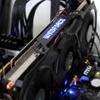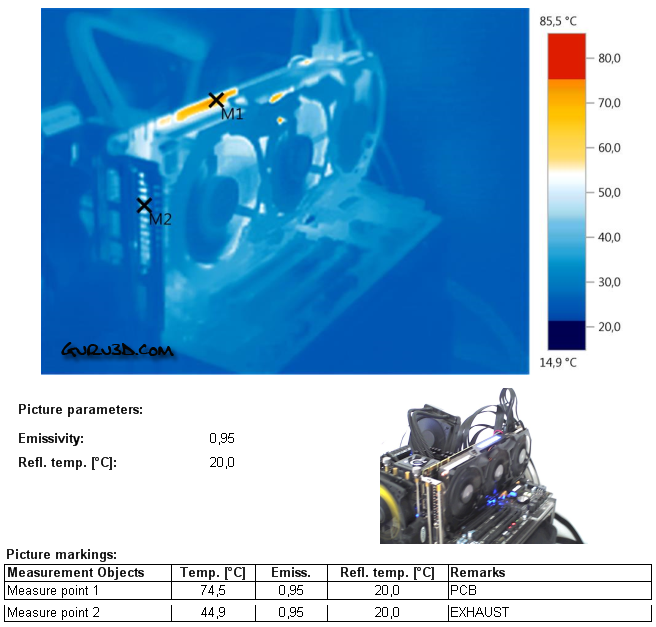Graphics Card Thermal Imaging Measurements (FLIR)
Thermal Imaging Temperature Measurements
A new addition to our reviews will be the inclusion of Forward Looking Infra Red thermal images of hardware. Over the past years we have been trying to figure out what the best possible way is to measure temperatures on hardware. Multiple options are available but the best thing to do is to visualize heat coming from the product or component being tested. The downside of thermal imaging hardware is simple, FLIR camera's with a bit of decent resolution costs up-to 10000 EUR. Hence we passed on it for a long time.With a thermal imaging camera a special lens focuses the infrared light emitted by all of the objects in view. This focused light is scanned by a phased array of infrared-detector elements. The detector elements create a very detailed temperature pattern called a thermogram. It only takes about one-thirtieth of a second for the detector array to obtain the temperature information to make the thermogram. This information is obtained from several thousand points in the field of view of the detector array. The thermogram created by the detector elements is translated into electric impulses. The impulses are sent to a signal-processing unit, a circuit board with a dedicated chip that translates the information from the elements into data for the display. The signal-processing unit sends the information to the display, where it appears as various colors depending on the intensity of the infrared emission. The combination of all the impulses from all of the elements creates the image.
Why A Move Towards Thermal Imaging?
We can seek hotspots on the PCB indicating, for example, GPU but also VRM temperature as well as how heat is distributed throughout a product. We do hope you will enjoy this new technology as it did cost us an arm and a leg to be able to implement it.
Above, you can see the graphics card in IDLE conditions. We position our measure point in the GPU die areas at the backside of the PCB, in this case the card is protected by a back-plate so we can only see indicative temperatures. You can see NORMAL idle results, hovering in the below 30 degrees C range. That's excellent and already an improvement over reference cooling.
Now above, the reference cooler - this is what you normally see.

And then above we see the results with the newly applied Gigabyte WindForce cooler. Quite a difference.
We can measure pretty accurate temperatures at the GPU and VRM areas. So once we start to stress the GPU the thermals quickly change. We can measure thermals down to a 10th of a degree, our thermal camera is calibrated and does not lie. We reach almost 78 degrees C on the GPU which is a few degrees higher than I had hoped for, but still good.
At M2 (Measure Point 2) the VRM area can be spotted, the back-plate left a hint of PCB visible, and thus measurable. It runs roughly 91 Degrees C on that spot, this is a high but normal temperature. Make sure you have plenty airflow inside your chassis as that will definitely help. As to why the GDDR5 memory measure runs so high on these cards (84 Degrees C) we don't know,.
When we position the thermal camera outwards we can see that the overall cooler design really works well. The hottest point is the top side of the card where there is some residual PCB heat detected. Overall it is a little so-so as the backside does leak a lot of heat. The majority of heat is exhausted inside the PC though. So get some proper ventilation in the PC OK?




